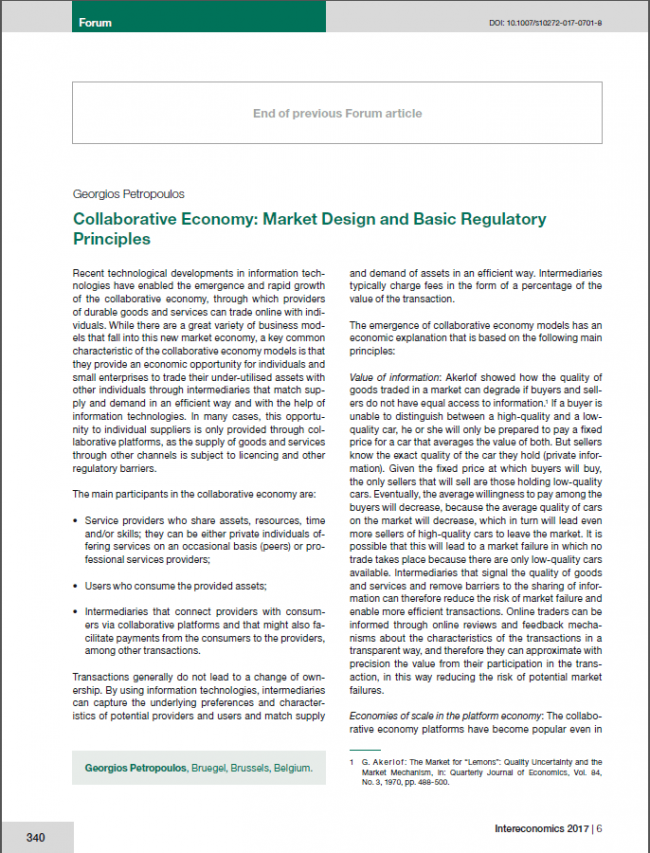Collaborative Economy: Market Design and Basic Regulatory Principles
Despite the efficiencies and benefits associated with the collaborative economy, there are concerns about how it can be properly regulated. The differ
This research has been published in Intereconomics Review of European Economic Policy, Volume 52, November/December 2017, Number 6 · pp. 340-345.

Recent technological developments in information technologies have enabled the emergence and rapid growth of the collaborative economy, through which providers of durable goods and services can trade online with individuals.
While there are a great variety of business models that fall into this new market economy, a key common characteristic of the collaborative economy models is that they provide an economic opportunity for individuals and small enterprises to trade their under-utilised assets with other individuals through intermediaries that match supply and demand in an efficient way and with the help of information technologies.
In many cases, this opportunity to individual suppliers is only provided through collaborative platforms, as the supply of goods and services through other channels is subject to licencing and other regulatory barriers.
The author focuses on one regulatory challenge in the era of collaborative consumption: ensuring a level playing field in market competition between peer-to-peer transaction marketplaces and incumbent, traditional providers of durable goods and services. He provides some basic principles for the regulatory framework which needs to be adopted. Then, he discusses the opinion of the European Court of Justice's Advocate General Maciej Szpunar about the classification of Uber as a transportation company. Finally, a focus will be made on the implications that his reasoning could have on other collaborative economy platforms and not on the opinion itself.



